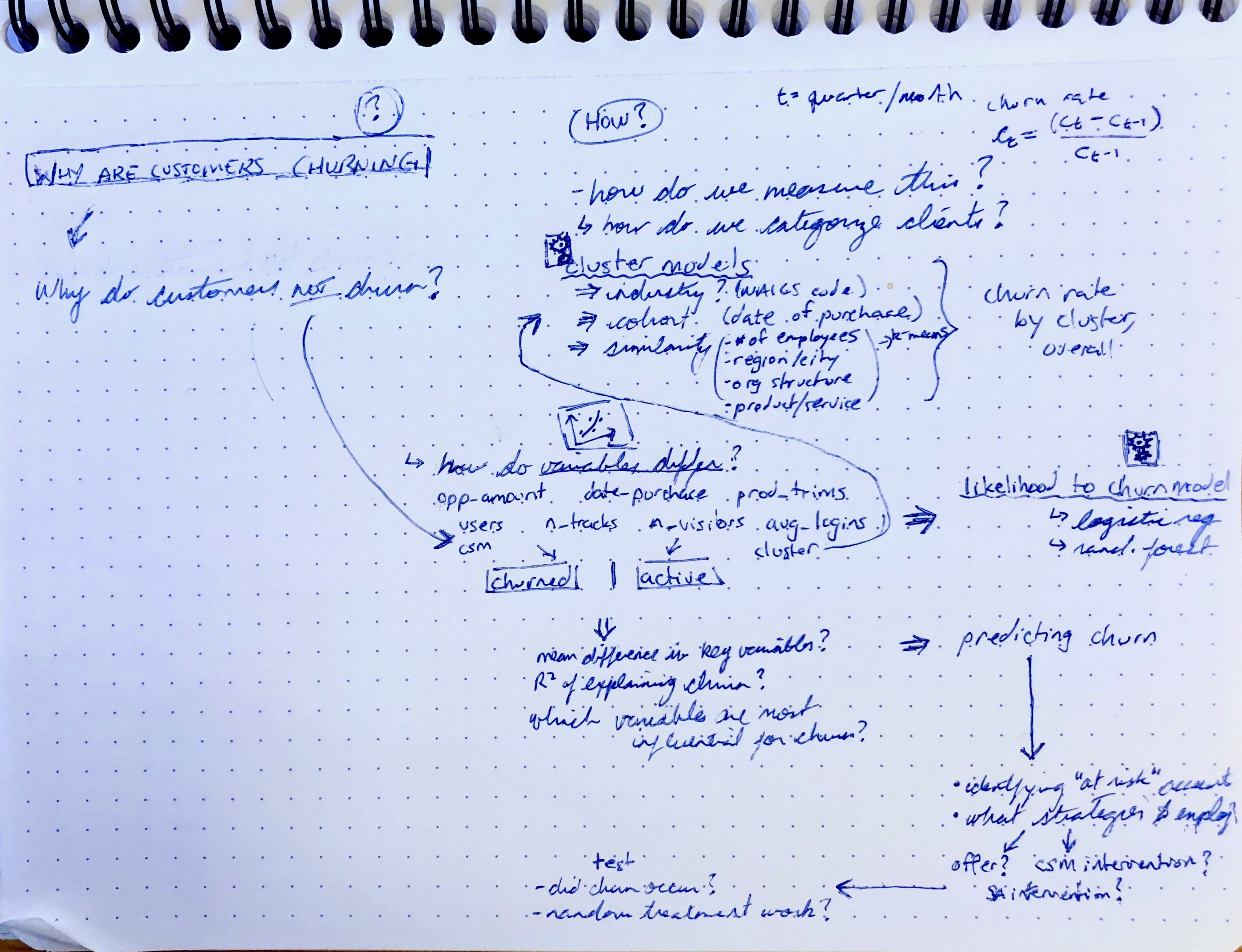The non-marketing'y un-clever title is: "Ask 'How' Instead of 'Why'"
Evidence of observations + feedback has confirmed that I tend to lean into the philosophical side of things. To say I’m a “deep thinker” would be self flattery {in reality, mostly I 'dwell'} but I do naturally like to get lost in thoughts. Also, my son is ~6.5 years old, so I’m constantly discussing the why? of everything – and though taxing at times, my inner statistician genuinely appreciates this line of questioning.
I’ve also observerd however that these abstract thinking and deeply philosophical conversations quickly tend to go to infinity and have nothing to show for. Thankfully, inner statistician has also trained me to reframe questions into statistically appropriate ones .. empirical ones .. asking the question in a way that we can test or measure using data. I’ve shared/used this in several different scenarios and noticed that the practice of reframing the question is actually effective for everyone; even if there’s no intention in conducting empirical analyses.
This brief write up outlines the method with a (fun) example of its application so one may incorporate it in their everyday problem solving toolkit #everydaystats.
Generalizing the method of framing a statistical question is pretty straightforward: simply convert your question from “why” into “how”. Though subtle, this rephrasing is effective because our ‘why’ questions tend to evoke profound thought around causalities, thrusting us into an unbounded, free-flowing world of inquisition. Reframing to ‘how’ nudges us into a more bounded domain with a clearer, iterative path of thoughts and ideas.
Let me share a typical example from my aforementioned youngin:
Son: Why do I get bad dreams?
Me: Sometimes when we sleep we can have all kinds of dreams
Son: But they can be really spooky, last night I dreamt there was no electricity and we could fly but it was dark and I couldn’t fly as fast as you and mumma .. Why is there no electricity sometimes?
Me: Remember the hydro poles and wires we see, those connect to all the buildings to provide electricity, sometimes some of the lines can break or there can be an issue which prevents the electricity from flowing through to the buildings
Son: Why can’t we just use batteries then?
Me: Good question, we can for some things but also most batteries only hold a small amount of power which is good for smaller things like toys, or a phone or iPad so it would take more to run everything in the building, and also when the battery runs out it needs to be recharged and we’d then still require something like the electricity grid
Son: What about those electric cars we saw? You told me they use batteries to power them and people drive them all over even fast on the highway. Why are electric cars faster than the gas ones?
…
For context, we recently had a very brief power outage and seeing almost everything including lights, Internet, the fridge, etc become inoperable caused him a bit of panic as it was the first time he saw how dependent life is on electricity. {We also saw some of the features of the Tesla, including insane mode}. Though the issue is exaggerated given he’s a kid, the pattern is nonetheless similar to our own thought process or conversations. Other (frequent) conversations with my son often spiral off in the same way, leaping through various topics; here it went from the primary subject of bad dreams -> the electricity grid -> battery and power storage -> electric cars.
Sometimes I’ll try rephrasing with ‘how’ {Bad dreams are a top item in a young person's life so I've been able to revisit these conversations with how/why many times} and those conversations follow markedly different paths. For example, I’d start initially with how do we dream? {a less specific version of 'how does our brain function when we're sleeping?'} and iterating from there the conversation will usually remain tethered closely to the main topic, often with lots he can take away from it. Of the ‘how’ style conversations we’ve had on dreams, the discussions have looked like: bad dreams -> [lucid dreaming -> stages of sleep -> consciousness -> frontal cortex + regions of the brain]. We’ve also covered things like correlations of dreaming with diet and lifestyle. The ‘why’ type conversations tend to be similar to the above: interesting but crossing many topics and ideas.
I want to emphasize that there is nothing wrong with unbounded ‘why’ reflections/conversations, and they’re often quite enjoyable {both in conversations with adults or 6 year olds}. Shifting to ‘how’ is simply more effective if you’re particularly after tangible outputs or actionability. This is what makes it an excellent method for work projects and problem solving as an everyday-stats tool – I’ve found it is especially powerful for highly ambiguous problems.

This was a brainstorm from a recent conversation surrounding an observed increase in churn rate. The left was the primary question 'why are customers churning?', which I rephrased to 'how do customers churn?'. With a couple of follow up questions on defining + measuring churn, the output was three clear next steps of: clustering analysis and model to categorize clients (granular churn rates); empirical analysis of churned v. non-churned customers -> likelihood to churn predictive model.This method also bolsters a problem forward approach, as shifting to ‘how’ sharpens the question thereby retaining focus, with each iteration providing an answer or set of answers. For the questions you may really explore or utilize empirical models to analyze, it is often the results of ‘how’ that start to tease out the deeper reasons of ‘why’ (causalities).
Give it a try and see if you find success in asking ‘how’.
Related aside: Hilariously, whenever grandparents etc say “sweet dreams” to my son, he replies categorically “no. I do not want any dreams, sweet or scary” : )
